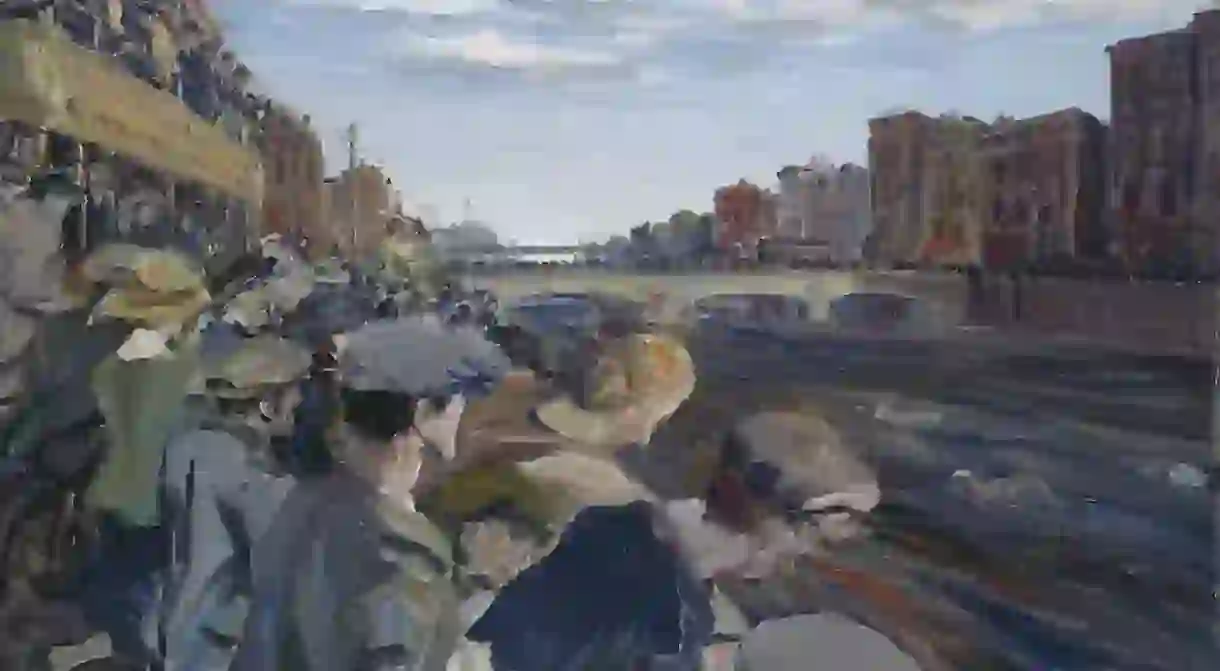Artist Profile: Irish Expressionist Jack Butler Yeats

Expressionist painter Jack Butler Yeats was one of early 19th-century Ireland’s most important artists. The son of the Irish portraitist John Butler Yeats, he created an expansive body of work during his lifetime, much of which is now on display in the country’s museums. Working predominantly in oils, he is known for his use of broad, flat brushstrokes and powerful colour contrasts.
Childhood
Born in London in 1871, Jack was the fifth of the Yeats’ six children. He was brought up in Sligo by his grandparents from 1879 to 1887, while his family remained in London where his father was building a successful career as a portrait artist. During this time, Jack developed a powerful connection to the Sligo landscape, which would go on to feature extensively in his paintings – in his old age, he would write to the Mayor of the town, ‘From the beginning of my painting life every painting which I have made has somewhere in it a thought of Sligo’. At the age of 16, he was reunited with the rest of the family in England where he attended the Government School of Design, South Kensington, Chiswick School of Art and the Westminster School of Art.

Early Career
Jack B. Yeats began his artistic career doing black and white illustrations for journals, books and magazines, and even drawing comic strips. He married a fellow art student, Mary Cottenham White, in 1894, and the couple moved to Devon in south-west England. Three years later, Yeats held his first one-man show of watercolours in London’s Clifford Gallery. These early paintings were heavily influenced by memories of Sligo. In 1902, Yeats met American lawyer John Quinn in Dublin, who would become an important patron and bought several of his early works. In 1907, he illustrated Irish author John Millington Synge’s book The Aran Islands.
http://instagram.com/p/BJ8DPoDBALp/?tagged=jackbyeats
Later Years
Like his older brother – the Nobel Prize-winning poet William Butler Yeats – Jack B. Yeats was moved by the Irish fight for independence, but kept his contributions limited to the creative sphere. After moving back to Ireland in 1910, he documented that period in Irish history in his own unique way. Now focusing on oil painting, he created realistic snapshots of both rural and urban Irish life of that time. His polychromatic, expressionist work is intensely personal, with a palpable sense of his own presence within each scene.
Following the creation of the Irish Free State in 1922, his painting The Liffey Swim won a silver medal at the 1924 Paris Olympics in the arts and culture segment, making Yeats the republic’s first ever Olympic medalist. As well as painting, he penned six novels, wrote plays and designed sets for The Abbey Theatre, and was a talented poet. Interestingly – in something of a slight to William – their father, John Butler Yeats, is noted as having said that ‘some day I will be remembered as the father of a great poet, and the poet is Jack’.

Legacy
Jack Yeats died in Dublin in 1957. After his death, his close friend Samuel Beckett wrote that ‘Yeats is the great of our time…he brings light as only the great dare to bring light to the issueless predicament of existence.’ Today, the National Gallery of Ireland’s Yeats Collection holds many of Jack’s works alongside those of his father, and The Niland Collection at The Model Sligo has almost 50 Jack Yeats paintings.
http://instagram.com/p/BGHrLGIpTX4/?taken-by=modelsligo













